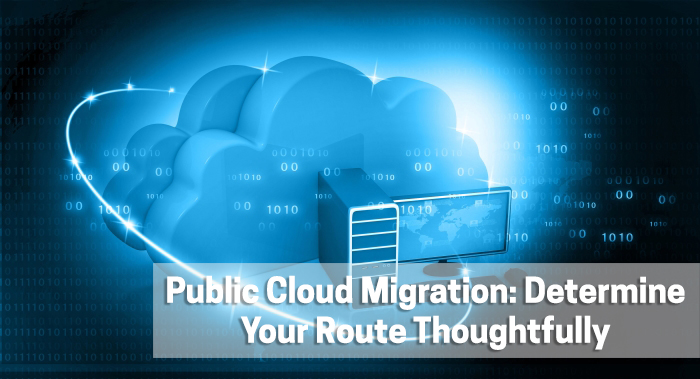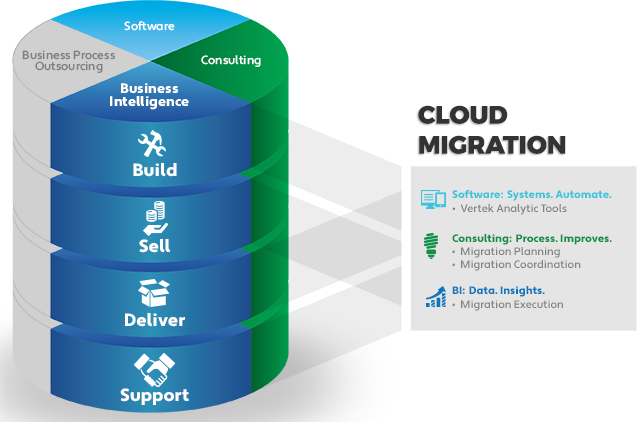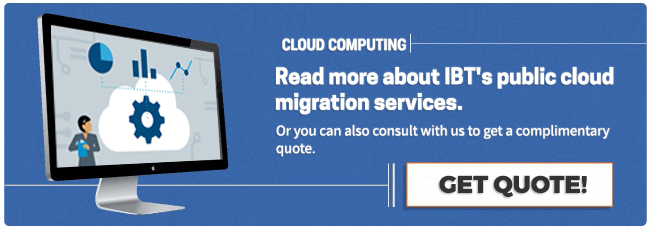
Public Cloud Migration: Determine Your Route Thoughtfully
We’re in the midst of an exciting market transformation to the public cloud. Businesses increasingly view the cloud as a competitive obligation, and they’re gaining belief in its security capacities.
The public cloud outsourcing services market is forecasted to develop six times faster than overall IT spending over the next few years, scoring $141 billion as early as 2019
But public cloud technology is complicated, and migrations can be risky — especially DIY migrations. Possibly the most severe migration mistake we notice at IBT is a failure to migrate apps using the relevant methodology.
In this write-up, we’ll discuss every public cloud migration method such that you can be confident you’re working the best ones given your application landscape.
Bear in mind; not all applications apply in the cloud. In addition to migration methodologies, cloud professionals have detailed procedures for accommodating apps that can’t be migrated, and we’ll consider those in the latter half of the post.
Strategic Ways to the Cloud: Lift-And-Shift, Re-Platforming, and Refactoring
Lift-and-Shit
The easiest migration strategy is known as lift-and-shift or rehosting. This is a machine-to-machine movement of application and data to a cloud platform — an easy replication comprising configuration settings but no code rewrites. You can automate most lift-and-shift activities.
Usually, the suitable candidates for lift-and-shift movements are stand-alone applications without complicated interdependencies. Lift-and-shift movements can suddenly bring down operating costs of on-premises infrastructure, and the migration cost usually will not overtake the cost of moving workloads within on-premises VMs. Because lift-and-shift applications haven’t been produced or coded for the cloud, yet, they won’t be able to take full benefit of cloud capacities.
Re-Platform
Seldom re-platforming is mentioned as “lift-tinker-and-shift.” Rather than code-level modifications, re-platforming requires little but critical environment-level modifications to allow application servers and software to work on a new cloud platform. Re-platforming comprises:
- DNS and networking modifications,
- operating system and database version upgrades and
- INI and configuration file modifications.
Almost any tailored application less than ten years old is a good applicant for re-platforming.
Refactor
Refactoring applies to code-level modifications that optimize an application for cloud platforms. It’s a complicated, time-consuming function and needs cloud-service specialty skills and infrastructure and security experience. Refactoring enhances an application’s capacity to take advantage of the scalability and flexibility of the cloud. Compute-intensive apps refactored to overwork automated resource provisioning, for instance, can produce substantial cost savings during growth-driven infrastructure development.
A business’s long-term vision for an application will usually ascertain whether it requires being refactored. You may want to improve an internal system so it can be applied in a customer-facing function, for instance, or re-architect an application to facilitate mobile access.
The Ways Not Exercised: Retaining, Replacing and Retiring
Retire
Pre-migration evaluations usually reveal that between 10 to 20 percent of enterprise IT applications can be withdrawn. (Those apps may be outmoded, no longer carry a business process, or have inactive data that can be archived).
Cloud platforms will also present some capabilities and services more efficiently than your prevailing applications. Up to 30 percent of data center apps can be withdrawn, according to Cloud Technology Partners, because their functionality becomes irrelevant in the cloud.
And, most data centers run specific applications only to satisfy compliance obligations. During migration, you can reassemble those systems as cloud software, experiment them, and then apply them only as needed, enabling you to retire the original application.
Replace
Some applications can be cost-efficiently replaced by Software-as-a-Service (SaaS) options. The replacement choice can be complicated, depending on an application’s functionality, specifications and future performance as envisioned by the business. If a cloud-based SaaS solution can replace a data center application and still satisfy organizational demands, your immediate and long-term cost savings may be notable. SaaS solutions, for instance, can support new business needs naturally— no need to mobilize a costly development team.
Retain
Some businesses see public cloud migration as a means to fully eliminate their data center presence. The majority, though, will reserve some percentage of their on-premises application property, having ascertained during the assessment that neither replacement nor change is justified.
The difficulty here is not one of migration, but how to assure that the retained applications can productively communicate with the cloud-based applications. Your retained apps may be large, densely interconnected legacy systems. If so, be certain you thoroughly consider how to integrate them with your new cloud-based applications.
The Most Comfortable Path: Managed Migration
 Before you start on your migration project, make sure your cloud management team has a basic understanding of these migration methodologies and associated technical concerns.
Before you start on your migration project, make sure your cloud management team has a basic understanding of these migration methodologies and associated technical concerns.
If you don’t have such expertise in-house, and you’re not prepared to invest in new talent, your best bet is a managed migration. IBT’s Managed Services extends end-to-end migration direction, from initial discussions to application optimization in the cloud. We’ve used our validated methodology to control thousands of successful migrations for organizations of all sizes.
No related posts found
GLOBAL & REGIONAL BRANDS THAT TRUST IBT



























